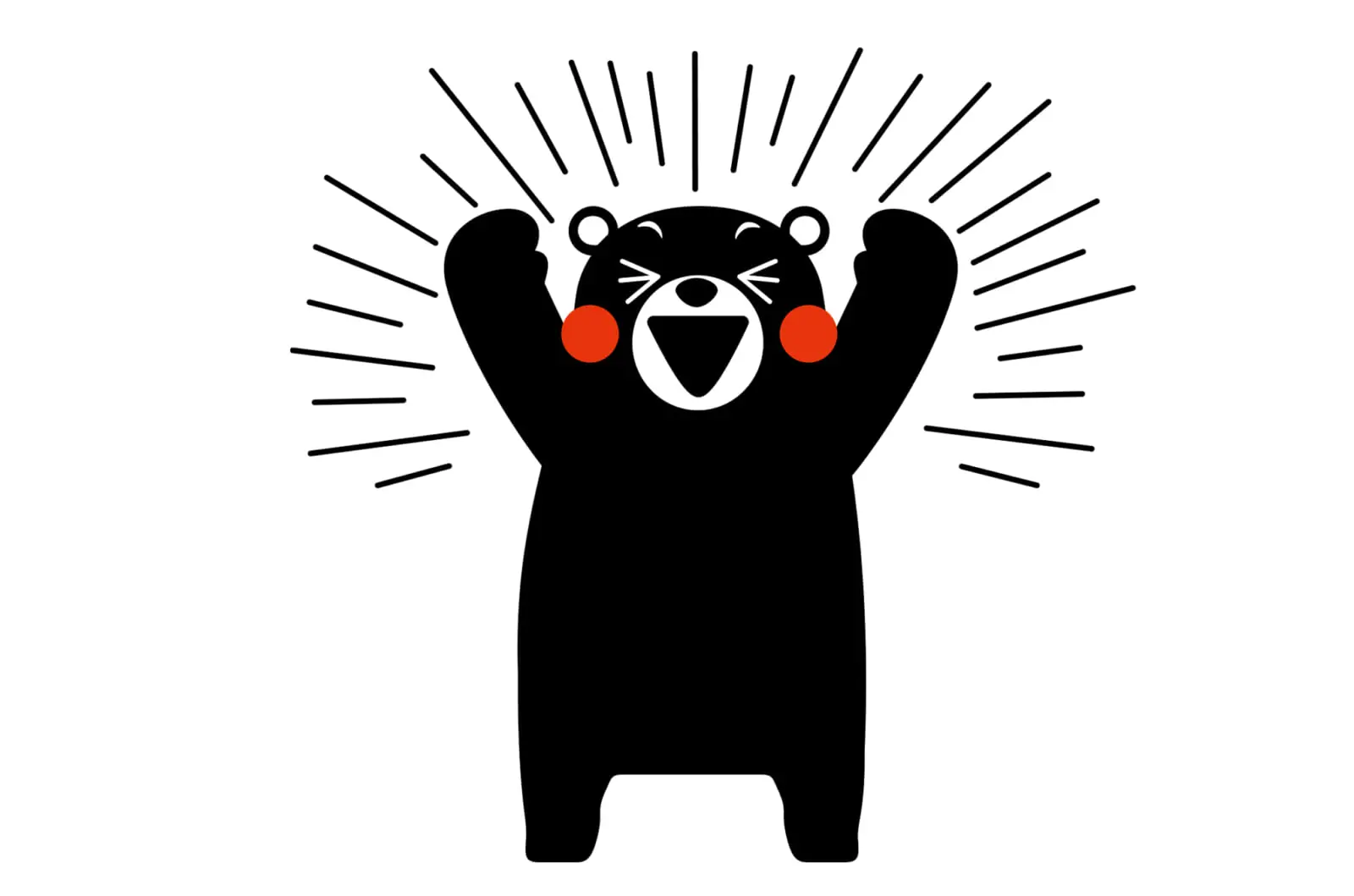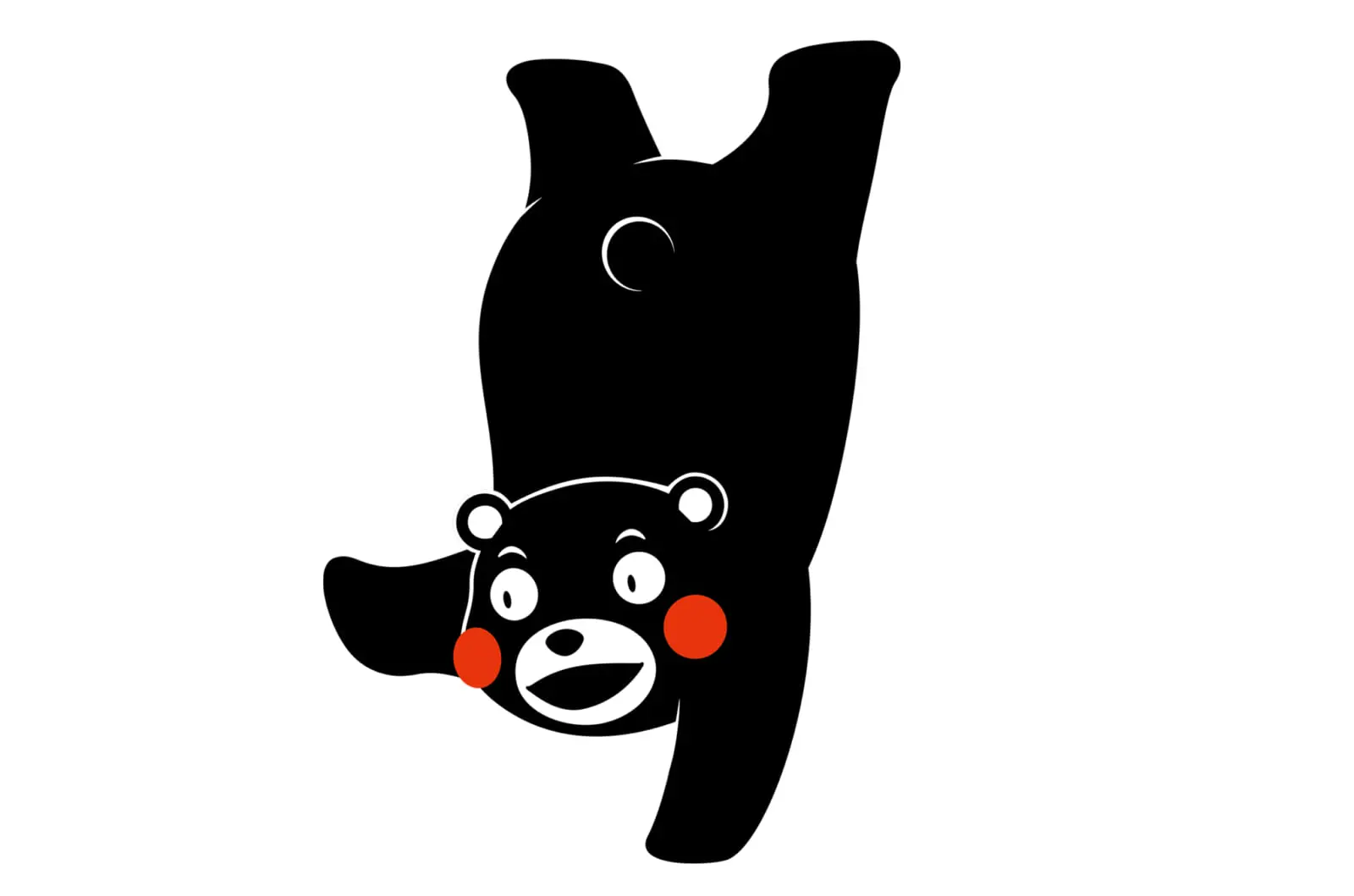This article appeared in Tokyo Weekender Vol. 1, 2025.
To read the entire issue, click here.
In Kumamoto Prefecture, he’s an inescapable presence: a heavily built black bear with an often mischievous but friendly expression and bright red cheeks that grab your attention like traffic lights. You’ll see him everywhere — at the airport immediately upon arrival, on government buildings, on local produce and even adorning garbage trucks. This is Kumamon, a larger-than-life figure who has become an icon of not just Kumamoto but of Japan as a whole.
“He has become more than a symbol for that region, more than merely a strategy to push its tourism and farm products,”wrote the journalist Neil Steinberg in an article for the BBC. “He is almost regarded as a living entity.”

©2010 Kumamoto Prefecture Kumamon
Celebrity Status
It’s hard to overstate Kumamon’s influence. In 2019, his merchandise sales reached a new record — over ¥150 billion. He has over 800,000 followers on X and over 100,000 on Instagram. Kumamon Square, his “head office” and gift shop, has greeted over 3 million visitors since opening in 2013, with foot traffic consisting of many tourists who came to Kumamoto Prefecture specifically for the chance to meet the bear in person.
When he’s not engaging in online shenanigans, Kumamon works for the government as Kumamoto Prefecture’s official “sales and happiness manager” — promoting tourism, merchandise, cuisine and the overall spirit of Kumamoto and Kyushu culture nationwide and beyond.
According to Eri Kotaka, a staff member at Kumamoto’s Tokyo Branch Office, the celebrated mascot often incites a passionate reaction from Tokyoites. “When Kumamon appears … it’s like they’ve seen a celebrity,” she says.
In some ways, Kumamon is a classic yuru kyara mascot, with his simple, endearing design and close connection to a specific region in Japan. (“Yuru” comes from the Japanese word “yurui,” or “wobbly,” and “kyara” is from the katakanized word for “character.”) Unlike your typical cartoon or adorable fictional creature, yuru kyara simply exist to promote local communities or organizations, acting as cute, non-threatening representatives for often cold and faceless groups or corporations. You can find a mascot for nearly anything in Japan — the Metropolitan Police Department has Pipo-kun, the National Tax Agency’s e-Tax system has E-ta-kun, and Funabashi city has the genderless magical pear fairy named Funassyi.
But among yuru kyara, Kumamon stands out. He’s perhaps the most famous yuru kyara success story, largely credited as one of the variables that sprouted the massive surge in Japanese mascots over the last 15 years. It’s now estimated that there are over 3,000 yuru kyara nationwide, with creative backstories and cute designs — many dreamed up in an attempt to replicate Kumamon’s secret magic.

©2010 Kumamoto Prefecture Kumamon
Kumamon’s Rise to Fame
Kumamon’s rise to prefectural symbol and international recognition is actually a bit of an accident. The character was created in 2010 to promote Kumamoto Prefecture. The region was preparing for the opening of the Kyushu Shinkansen Line’s northern section, which would connect Kumamoto to Japan’s major cities. To draw tourists in, the prefecture launched a campaign — called Kumamoto Surprise — to tout its many natural and cultural assets. Kumamon was simply meant to be an embellishment to the Kumamoto Surprise campaign’s logo.
At the time, Kumamoto Prefecture was mostly seen as an agricultural area. Some visitors came to see Mount Aso or Kumamoto Castle, but the prefecture wasn’t considered much of a tourist destination, especially internationally. Kumamon changed everything.
He first made headlines through a cleverly orchestrated publicity stunt, in which the governor of Kumamoto held a press conference in Osaka to declare that his special assistant — an adorable, bipedal black bear — had disappeared. The reason, he explained, was that the bear was supposed to be handing out 10,000 business cards to passers-by in the city, but had abruptly gotten sick of his task and run off. Thus a legend was born. Kumamon brought in a jaw-dropping ¥11.8 billion in merchandising sales in just the first six months of 2012, just two years after his official debut.
What, exactly, makes him so popular? His cuteness certainly helps, but it’s arguably Kumamon’s personality that’s really captured so many hearts. “Despite his mischievousness, he is kind to children and the elderly,” says Ayaka Honda, the Kumamon division chief, “and I think his nimble movements allow for nonverbal communication even without words.”
Kumamon is silly, sometimes disobedient and has human-like problems. “He disappeared because he got tired of handing out business cards … He failed at dieting, so he has some human aspects,” continues Honda.
Seeing Kumamon’s success, the Kumamoto government decided to waive the licensing fees that traditionally accompany popular characters. Domestically, anyone can use Kumamon’s image royalty-free, as long as the product originates from Kumamoto or promotes the prefecture. This is why you’ll see Kumamon’s face plastered everywhere, amassing a library of hundreds of thousands of pieces of merchandise.

©2010 Kumamoto Prefecture Kumamon
Connecting the World, One Bear Hug at a Time
Beyond his profitability, Kumamon serves as a gateway ambassador for international relations, establishing and maintaining connections with various countries thanks to his soft power charms.
The bear has visited China, Hong Kong, Taiwan, the United States, France and Thailand to foster Japanese relationships abroad. Together with Governor Ikuo Kabashima, Kumamon raised funds for the reconstruction of Notre Dame Cathedral. He visited the U.S. Olympic & Paralympic Training Center to motivate American athletes ahead of the 2020 Tokyo Olympics. When a 7.0 magnitude earthquake struck Kumamoto in 2016, students and fans in Shanghai collected donations and notes of encouragement for Kumamon and Kumamoto residents. Kumamon himself visited disaster areas to provide emotional support.
Despite Kumamon celebrating his 15th birthday on March 12 of this year, Kumamon shows no signs of slowing down — his next big gig is at the highly anticipated Expo 2025 world’s fair in Osaka, where he’ll join the expo’s own mascot, Myaku-Myaku, as an official special supporter.
To many, Kumamon is not a character but a neighbor and a friend. Wherever he goes in the next 15 years, he’s sure to bring hugs, laughter and the reminder to not take life too seriously.

©2010 Kumamoto Prefecture Kumamon
For more information on Kumamon’s activities in Kumamoto Prefecture and beyond, visit his website. You can also follow Kumamon on X and on Instagram.
Ginza Kumamotokan, Kumamoto’s antenna shop in Tokyo, is open every day from 11 a.m. to 7 p.m. You can find them online or on Instagram.









